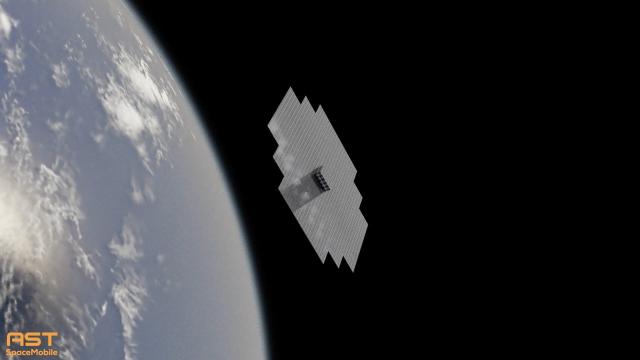Late last year, a communications satellite unfurled its giant wings, stretching out a 64-square-metre antenna array in low Earth orbit. Once fully deployed, BlueWalker 3 became one of the brightest objects in the night sky, outshined only by the Moon, Venus, Jupiter and seven stars, according to new research.
Texas-based startup AST SpaceMobile launched its prototype satellite in September 2022 as part of its plan to connect smartphones directly to orbit, essentially establishing cellphone towers in space. As the first of more than 100 satellites set to build an orbital constellation, the prototype satellite is already a major threat to Earth-based observations of the universe.
The authors of a new study published today in Nature compiled observations of BlueWalker 3 from professional and amateur astronomers in Chile, the U.S., Mexico, New Zealand, the Netherlands and Morocco. Through the different telescopes, BlueWalker 3 appeared as bright as two of the ten brightest stars in the night sky, Procyon and Achernar.

AST SpaceMobile isn’t the only company littering low Earth orbit with satellites. Elon Musk’s SpaceX is building an internet constellation in low Earth orbit with plans to deploy upwards of 42,000 satellites. Amazon is also planning to launch a fleet of 3,236 satellites for Project Kuiper, while OneWeb wants to launch 648 satellites.
Those satellites reflect sunlight back to our planet, potentially causing bright streaks across astronomical images and interfering with scientific data. Satellites like BlueWalker 3 might also present an additional source of noise for radio astronomy, interfering with wide band receivers and affecting nearby protected radio astronomy bands, according to the new study.
The BlueWalker 3 prototype has the largest-ever commercial communications array deployed in space. During overhead observations in September, the satellite had a brightness magnitude of around +3.5, making it visible to the naked eye. However, since the satellite deployed its antenna array in November of last year, its brightness increased by about two magnitudes, Marco Langbroek, an astrodynamics lecturer at Delft Technical University in the Netherlands, told Gizmodo in November 2022.
The authors of the new study are not just concerned about BlueWalker 3 as a lone satellite, but rather that it reflects a trend of increasingly larger and brighter satellites. BlueWalker 3 periodically becomes hundreds of times brighter than the current set of recommendations set forth by the International Astronomical Union (IAU) to mitigate the effects of satellites on the visibility of the cosmos, according to the new study.
There are currently no official rules to regulate the brightness of satellites in orbit. Companies like SpaceX have been in talks with the IAU to figure out ways to dim the brightness of the Starlink satellites, which have already interfered with astronomical observations. The authors behind the new study recommended that the effect of satellites on astronomy should be considered as part of their launching authorization processes.
Here Are The Cheapest NBN 50 Plans You Can Get Right Now
Whether you’ve got the need for speed or simply looking for a better deal, these are the best prices going right now for the NBN 50 speed tier.
